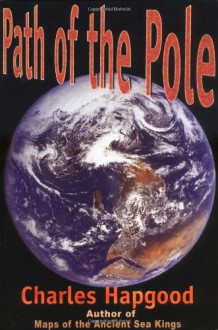
For much of my reading of this book I've been all "squee" over science and science history. However! I am still the same person who bought and read Death in Yellowstone and Over the Edge: Death in the Grand Canyon (seriously, you would not believe the stupid things people do in these parks), so I can't pretend there's not a "let me marvel at the horror of this trainwreck" sort of thing about volcanoes. But there's no need to feel guilty or ghoulish (too late, I was anyway) - Winchester seems to suspect we might be wondering about what happens to someone caught in an eruption.
First you have to get to chapter 8, and up to that point Winchester teases you along about the greatest explosion ever, etc. But once you're at chapter 8, you get all the eyewitness reports. Then in the section called The Effects, starting on p 239, you get the details. Which could also be titled Ways Die in A Volcanic Eruption. (Note: there's nothing overtly gory in these quotes.) Since not every danger was to occur at Krakatoa, Winchester cites other volcanic events. I've also added some wikipedia links for those who want more science and/or lava photos. (This way I can absorb the educational info while all awe stuck by the horror of these scenarios. Multi-tasking!)
p 241-243: "...Erupted boulders and lumps of partly congealed lava - generally known by the term tephra, from the Greek word for "ash" - scream back down from the skies and flatten anything in their path. Perhaps a relatively small number of people, fewer than a thousand, died in this way from the Krakatoa eruption. All of them were in southern Sumatra, in the path of the prevailing wind: The hot ash that burned them alive had sped westward from Krakatoa on top of a cushion of superheated steam.
Most of the other means with which volcanoes kill their victims were not experienced here. In other eruptions lava flows surround and trap victims and sear them to death. Earthquakes associated with volcanoes destroy buildings, and huge seismically caused cracks in the earth swallow people and buildings in which they live. The terrifyingly fast-moving clouds of hot lava, ash pumice, and incandescent volcanic gases, known... to the rest of the world as pyroclastic flows, sweep people up and incinerate them in seconds...
...Clouds of sulfur-dioxide gas, usually released during eruptions, choke and poison their victims. Clouds of carbon dioxide suffocate them. Clouds of hydrochloric acid gnaw away at their lungs. The torrents of volcanic mud and water slurry that course down the sides of certain volcanoes and that have the Javanese name lahars...carry victims miles away, and drown and bury them.
...There are still more obscure risks: For example, volcanoes that erupt beneath glaciers - which tend not to have too many people living near them - produce sudden floods of melting ice, which have recently been given the exotic Icelandic name jokulhlaups...
However, all of the victims whose deaths can be attributed directly to volcanic activity during the last 250 years, fully a quarter are now believed to have died - drowned or smashed to pieces - as a result of the gigantic waves that were created by the eruptions. The entire Minoan civilization on Crete was supposedly wiped out in 1648 BC when volcanic tephra from the eruption of Santorini - or, much more probably, the tsunamis thrown up by the eruption - destroyed the palaces at Knossos.
...the greatest of these [tsunamis of the last 250 years] by far was the 1883 eruption of Krakatoa. About 35,500 men, women and children died as victims of the two gigantic waves that accompanied or were caused by the death throes of this island-mountain, and they account for more than half of all those in the world who are known ever to have died from waves caused by an erupting volcano.



 Log in with Facebook
Log in with Facebook 











